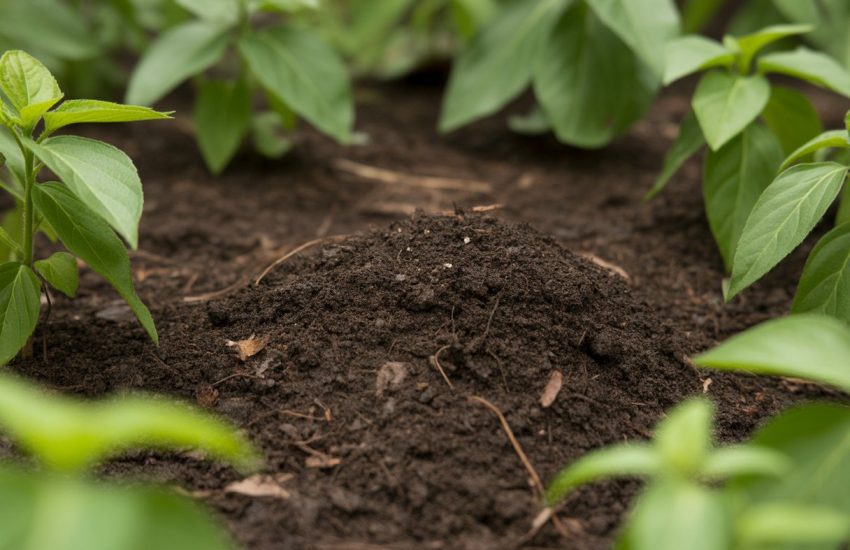How to Keep Poinsettia Alive: Tips and Tricks
Poinsettias are a popular houseplant, especially during the Christmas season. The bright red and green leaves add a festive touch to any room. However, many people struggle to keep their poinsettias alive beyond the holiday season. With proper care, it is possible to keep these plants thriving for months to come.

One of the most important factors in keeping poinsettias alive is proper watering. Overwatering can lead to root rot, while underwatering can cause the leaves to wilt and fall off. It is important to water the plant thoroughly, allowing excess water to drain out of the pot. The soil should be kept moist, but not soggy.
In addition to proper watering, poinsettias require the right amount of light and temperature. These plants prefer bright, indirect sunlight and temperatures between 65-75°F. Avoid placing them near drafty windows or heating vents. With the right care, poinsettias can continue to brighten up your home long after the holiday season is over.
Caring for Your Poinsettia
Poinsettias are popular houseplants during the winter holiday season. With proper care, they can continue to grow and thrive well beyond the holiday season. Here are some tips for keeping your poinsettia plant alive:
Optimal Lighting Conditions
Poinsettias require bright, indirect light to grow and thrive. Direct sunlight can damage the leaves and cause them to wilt. Place your poinsettia near a window that receives bright, indirect light for at least six hours a day.
Watering and Soil Requirements
Water your poinsettia plant when the soil feels dry to the touch. Overwatering can lead to root rot, so make sure the pot has proper drainage and avoid standing water. Use a well-draining potting mix that retains moisture but doesn’t become waterlogged.
Maintaining the Right Temperature and Humidity
Poinsettias prefer temperatures between 65-75°F (18-24°C). Avoid exposing your plant to cold drafts or heat vents, which can cause stress and damage to the leaves. Maintain a humidity level of around 50% to prevent the leaves from drying out.
Pruning and Repotting
To encourage healthy growth, prune your poinsettia in the spring by cutting back the stems to about 4-6 inches. Repot your poinsettia every two to three years, using a slightly larger pot and fresh potting mix.
Fertilizing for Healthy Growth
Feed your poinsettia plant with a balanced fertilizer every two to four weeks during the growing season. Follow the instructions on the fertilizer package and avoid over-fertilizing, which can cause damage to the roots.
By following these tips, you can keep your poinsettia plant alive and healthy for years to come.
Encouraging Reblooming
Poinsettias are known for their vibrant red bracts, which make them a popular choice for the Christmas season. However, with the right care, poinsettias can rebloom and bring color to your home throughout the year. Here are some tips for encouraging reblooming.
Initiating the Blooming Process
To initiate the blooming process, poinsettias require a period of complete darkness for at least 12-14 hours per day. This can be achieved by placing the plant in a dark cupboard or covering it with a shield or cardboard box. It is important to note that any exposure to light during this period can interrupt the blooming process.
After 8-10 weeks of complete darkness, the plant should start developing dark green leaves and colored leaves, which are a sign that the blooming process has begun. Once the colored leaves start to appear, the plant can be moved to an area with bright, indirect light.
Creating the Ideal Environment for Reblooming
To encourage reblooming, poinsettias require a consistent environment with proper lighting, temperature, and humidity. Here are some guidelines to follow:
Light: Poinsettias prefer bright, indirect light. Direct sunlight can damage the leaves and cause the plant to wilt.
Temperature: Poinsettias prefer temperatures between 60-70°F (15-21°C). Exposure to extreme temperatures can cause the leaves to drop.
Humidity: Poinsettias prefer a humid environment. Placing a tray of water near the plant or misting the leaves with water can help maintain humidity levels.
Fertilizer: Poinsettias require regular fertilization to encourage blooming. Use a balanced fertilizer every 2-3 weeks during the growing season.
By following these guidelines, poinsettias can rebloom and bring color to your home throughout the year. With proper care, your poinsettia can become a beautiful and long-lasting addition to your indoor garden.


